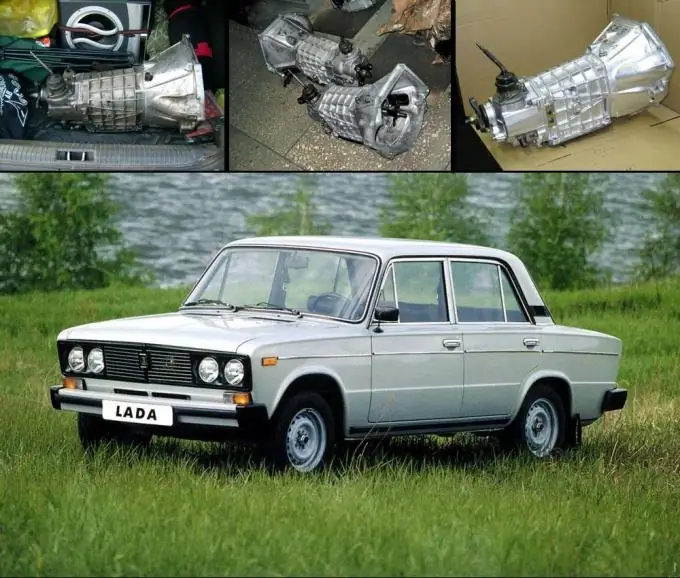- Author Maria Gibbs [email protected].
- Public 2023-12-16 03:05.
- Last modified 2025-01-22 17:48.
A smooth ride on a car depends a lot on the gearbox. In addition, it can become the final frontier in the event of a brake failure. Skillful use of the gearbox in difficult and difficult conditions, for example, in icy conditions or driving on heavy ground, enables the car to successfully cope with them. In order to always be confident in it, you should regularly carry out maintenance of the gearbox. If defective parts are found, they should be replaced immediately.

Instructions
Step 1
Remove and disassemble the transmission. Clean the parts thoroughly with a scraper or brush before inspection. Remove all deposits and clean holes and splines from possible dirt. Then rinse and remove all residual oil. Blow compressed air around the parts and wipe gently. Thoroughly blow out the bearings, while making sure that there is no rotation of the rings.
Step 2
Inspect gearbox covers and housing. The latter should not be cracked, damaged or worn in the bearing seats. The adjacent surfaces with the covers and the clutch housing should also be free of defects that could cause insufficient tightness and axle misalignment. Repair minor damage with a velvet file. If it is impossible to restore, replace the parts. Check the condition of the front cover. Determine the contact with the input shaft during rotation. If this is the case, replace the damaged parts. Check the drain hole of the front cover, it should not be clogged, otherwise clean its plug.
Step 3
Examine the oil seals. There should be no nervousness and damage on their working edges, wear of the working edge of no more than 1 mm is allowed. In case of minor damage, replace.
Step 4
Examine the shafts. The splines and sliding surfaces of the output shaft must be free of damage and excessive wear. The elastic coupling must move freely on the splines. There should be no visible irregularities on the front end of the output shaft, as well as in the hole of the input shaft on the rolling surface of the needles. Excessive tooth wear or chipping is not allowed on the intermediate shaft. The reverse gear axle must have a smooth surface with no traces of binding. Remove minor irregularities with M10-M40 grit sandpaper. In case of large deformations and damage, replace the shaft with a new one.
Step 5
Check gears. They are not allowed to wear or damage the teeth exceeding the permissible side clearance in engagement. Pay attention to the condition of the ends of the teeth on the rims of the synchronizers. The working surface should not be smooth and have visible signs of wear. Check the meshing clearance between the gears. Replace defective parts.
Step 6
Inspect the bearings. They should be in perfect condition. The radial clearance should not be more than 0.05 mm. Press the inner ring against the outer ring with your fingers and rotate one of them, the rolling should be light and smooth. Damage to the surfaces of balls or rollers and treadmills of rings is not allowed. Replace defective parts.
Step 7
Check forks and stems. Deformation of the gear shift forks is not allowed. The rods must move freely without play in the crankcase holes. Check the condition of the springs, locking nuts and retainer balls. Replace damaged parts.
Step 8
Inspect the couplings, hubs and synchroniser lock rings. Check for the possibility of sticking on the gear clutch hubs. Pay particular attention to the sliding surfaces of the couplings. Check the ends of the clutch teeth. Significant wear on the surface of the locking rings is not allowed. Eliminate free-slip faults with a velvet file. Replace defective parts.






